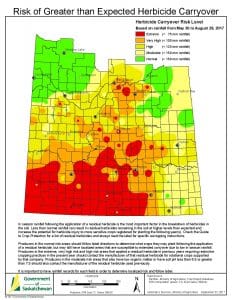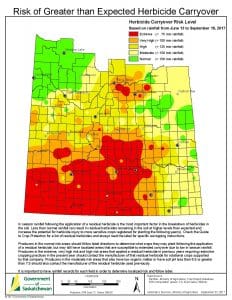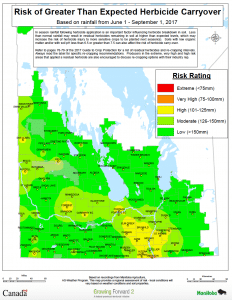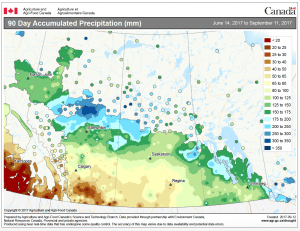We haven’t lost a crop in March, but growers across large parts of Western Canada are concerned about the soil moisture situation. This may influence decisions on seed costs, fertilizer rates and, when the time comes, seeding depth.
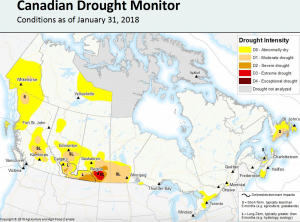
Link to this map with AAFC commentary.
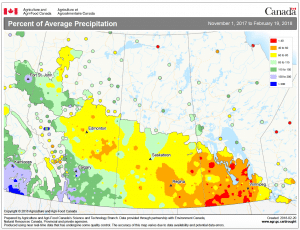
Link to this map.
Les Henry’s stubble soil moisture map.
Dry conditions increase herbicide carryover
With specific regard to herbicide carryover, in-season moisture from last season is the measure that influences herbicide breakdown. Fall rains come too late as the amount of breakdown has already been set, and spring moisture may liberate herbicides from the solid portion of soils, but the soils are too cold and microbial populations too low from winter to result in any substantive breakdown. Herbicide breakdown requires surface moisture. Subsurface moisture does not help.
Saskatchewan’s Clark Brenzil uses rainfall between June 1 to September 1 or June 15 to September 15 as a gauge. See the maps below. “These maps are only a guideline and divisions are not universal for each herbicide. Each herbicide requires a different amount of moisture for proper breakdown. Producers should check with manufacturers of residual/soil active herbicides to determine their level of concern for their rainfall amount,” Brenzil says.
Further reading:
Pages 77-78 of the Guide to Crop Protection lists re-cropping restrictions for residual products, with footnotes indicating when extended restrictions apply under abnormally dry years.
Canola Encyclopedia chapter on herbicide residue and drift injury
Recognizing herbicide residue and drift injury in canola. PDF booklet


